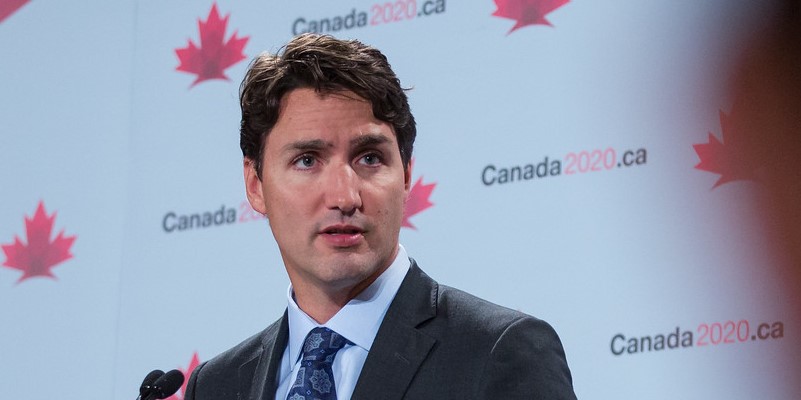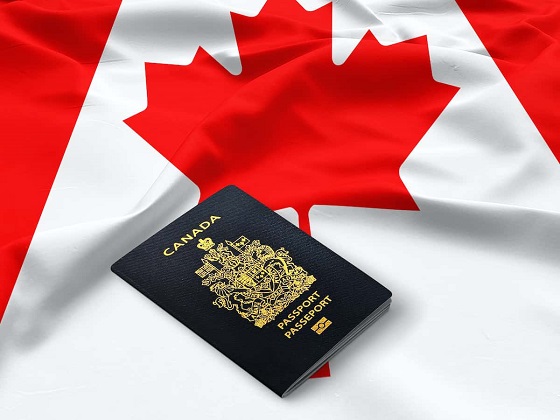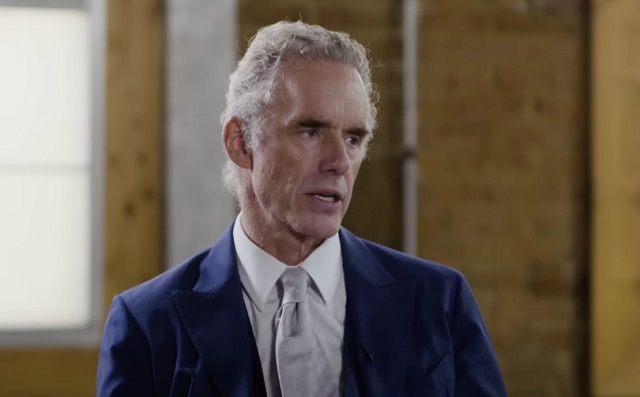National
Federal debt interest will consume nearly one quarter of income tax revenue in 2024

From the Fraser Institute
By Grady Munro and Jake Fuss
The Trudeau government will table its next budget on April 16. In recent years, the government has overseen a substantial rise in the amount of interest it must pay to service federal debt, reversing a long-standing trend of interest costs declining relative to personal income tax revenues. By 2024/25, according to projections, nearly one in four dollars of personal income tax revenue will go towards debt interest.
Just like how individuals must pay interest when they take out a mortgage, the government must also pay interest when it borrows money. These interest payments represent taxpayer dollars that don’t go towards programs or services for Canadians.
When interest costs rise faster than the government’s ability to pay—i.e. the revenues it brings in—the government will face pressure to take on more debt to maintain funding for programs and services. And by taking on more debt, this places additional upward pressure on interest costs (all else equal) and the cycle repeats.
A useful way to track this is to measure debt interest costs as a share of federal personal income tax (PIT) revenues, which represent Ottawa’s single-most important revenue source. In 2024/25, they’re expected to comprise just under half (46.4 per cent) of total revenues and therefore provide a useful gauge of the government’s ability to pay interest on its debt. As such, the chart below includes projections for federal debt interest costs as a share of PIT revenues for the two decades from 2004/05 to 2024/25.
As we can see from the chart, for many years federal debt interest costs had been declining as a share of Personal Income Tax revenues. In 2004/05, 34.6 per cent of PIT revenues went towards servicing federal debt, but by 2015/16 that share had fallen to 15.1 per cent. In other words, during the Trudeau government’s first year in office, federal interest costs consumed less than one in six dollars of personal income tax revenue paid by Canadians. Interest costs as a share of PIT revenues continued to fall for the next several years, down to a low of 11.7 per cent in 2020/21. However, this marked the end of the decline, and the years since have seen rapid growth in debt interest costs that far exceeds growth in PIT revenues.
In the two years from 2020/21 to 2022/23, federal interest payments rose from 11.7 per cent of PIT revenues to 16.8 per cent. And by the end of the upcoming fiscal year in 2024/25, debt interest payments will reach a projected 23.4 per cent of PIT revenues. In four years, debt interest payments are expected to have gone from consuming about one in nine dollars of PIT revenue to nearly one in four dollars. Put differently, nearly one quarter of the money taxpayers send to Ottawa in the form of personal income taxes will not go towards any programs or services in 2024/25.
The causes of this sudden rise in interest costs as a share of PIT revenues are the combined effects of a substantial accumulation of debt under the Trudeau government, and a recent rise in interest rates. From 2015/16 to 2022/23, the Trudeau government added $820.7 billion in gross federal debt, and by 2024/25 total debt will reach a projected $2.1 trillion—roughly double the amount inherited by the current government. Meanwhile, from 2022 to 2023, the Bank of Canada increased its policy interest rate from a low of 0.25 per cent to the current rate of 5.00 per cent.
Simply put, federal debt interest costs have risen and are expected to eat up almost one quarter of federal PIT revenues by 2024/25. To help prevent taxpayers from devoting an even larger share of their tax dollars towards debt interest, the Trudeau government should cease its heavy reliance on borrowing in this year’s federal budget.
Authors:
Fraser Institute
Federal government’s fiscal record—one for the history books

From the Fraser Institute
By Jake Fuss and Grady Munro
Per-person federal spending is expected to equal $11,901 this year. To put this into perspective, this is significantly more than Ottawa spent during the global financial crisis in 2008 or either world war.
The Trudeau government tabled its 2024 budget earlier this month and the contents of the fiscal plan laid bare the alarming state of federal finances. Both spending and debt per person are at or near record highs and prospects for the future don’t appear any brighter.
In the budget, the Trudeau government outlined plans for federal finances over the next five years. Annual program spending (total spending minus debt interest costs) will reach a projected $483. billion in 2024/25, $498.7 billion in 2025/26, and continue growing in the years following. By 2028/29 the government plans to spend $542.0 billion on programs—an 18.4 per cent increase from current levels.
This is not a new or surprising development for federal finances. Since taking office in 2015, the Trudeau government has shown a proclivity to spend at nearly every turn. Prime Minister Trudeau has already recorded the five highest levels of federal program spending per person (adjusted for inflation) in Canadian history from 2018 to 2022. Projections for spending in the 2024 budget assert the prime minister is now on track to have the eight highest years of per-person spending on record by the end of the 2025/26 fiscal year.
Per-person federal spending is expected to equal $11,901 this year. To put this into perspective, this is significantly more than Ottawa spent during the global financial crisis in 2008 or either world war. It’s also about 28.0 per cent higher than the full final year of Stephen Harper’s time as prime minister, meaning the size of the federal government has expanded by more than one quarter in a decade.
The government has chosen to borrow substantial sums of money to fund a lot of this marked growth in spending. Federal debt under the Trudeau government has risen before, during and after COVID regardless of whether the economy is performing relatively well or comparatively poor. Between 2015 and 2024, Ottawa is expected to run 10 consecutive deficits, with total gross debt set to reach $2.1 trillion within the next 12 months.
The scale of recent debt accumulation is eye-popping even after accounting for a growing population and the relatively high inflation of the past two years. By the end of the current fiscal year, each Canadian will be burdened with $12,769 more in total federal debt (adjusted for inflation) than they were in 2014/15.
You can attribute some of this increase in borrowing to the effects of COVID, but debt had already grown by $2,954 per person from 2014 to 2019—before the pandemic. Moreover, budget estimates show gross debt per person (adjusted for inflation) is expected to rise by more than $2,500 by 2028/29.
As with spending, the Trudeau government is on track to record the six highest years of federal debt per-person (adjusted for inflation) in Canadian history between 2020/21 and the end of its term next autumn. Why should Canadians care about this record debt?
Simply put, rising debt leads to higher interest payments that current and future generations of taxpayers must pay—leaving less money for important priorities such as health care and social services. Moreover, all this spending and debt hasn’t helped improve living standards for Canadians. Canada’s GDP per person—a broad measure of incomes—was lower at the end of 2023 than it was nearly a decade ago in 2014.
The Trudeau government’s track record with federal finances is one for the history books. Ottawa’s spending continues to be at near-record levels and Canadians have never been burdened with more debt. Those aren’t the type of records we should strive to achieve.
Authors:
Frontier Centre for Public Policy
How much do today’s immigrants help Canada?

From the Frontier Centre for Public Policy
Newly arriving immigrants require housing, infrastructure and services right away. But even including other construction workers with the 2 percent who are qualified, working-age artisans, immigrants don’t come close to building the housing they occupy. Along with paying taxes to support new arrivals, oppressive housing and living costs then deter procreation for many would-be parents in the existing population.
The relationship between GDP, productivity, and immigration
It is almost universally accepted that Canada needs immigration and the corresponding population increase to keep the economy going. That is how experts say we are supposed to get economic growth along with improvements in productivity and higher per capita GDP.
But how much of that is true?
First, GDP as a measure of economic activity and national prosperity has limitations. Adjusted for both inflation and the increase in Canada’s population, per capita GDP was in free fall in 2022 and 2023—at minus 2.6 and minus 3.9 respectively.
GDP says nothing about its distribution among the population. Inflation enriches those who own housing and other hard assets, but leaves behind those who do not own them. Notably, with demand overwhelming supply, immigrants’ housing needs and other requirements generate inflation and widen the gap between rich and poor.
It is also necessary to consider what GDP comprises. There is a rough and ready distinction between investment and consumption although the distinction is fuzzy. Broadly speaking, new and more efficient machinery improve productivity, enabling workers to deliver more value for the time they spend working. The consumption part of GDP includes a long list of activities necessary for sustaining life—everything from buying groceries to fixing broken windows, retailing goods made in China, and maintaining the superstructure of government.
Conventional wisdom is that immigration is necessary to make up for the decline in the home-grown population resulting from the birth rate below replacement. But that represents a vicious circle. Much of Canada’s GDP involves building homes and infrastructure, and supporting immigrants—all consumption components. Newly arriving immigrants require housing, infrastructure and services right away. But even including other construction workers with the 2 percent who are qualified, working-age artisans, immigrants don’t come close to building the housing they occupy. Along with paying taxes to support new arrivals, oppressive housing and living costs then deter procreation for many would-be parents in the existing population.
Many employers and politicians promote immigration. That is because immigrants tend to be more industrious and reliable than young home-grown Canadians. Immigrants and their children are generally prepared to work at current pay rates without clock-watching. And there is less pressure to install labour-saving equipment when a pool of people is ready and willing to work for what they get paid.
It’s also necessary to consider that for decades, technology, robots, and more efficient use of labour have been eliminating jobs. Some estimates have it that up to a third of all current jobs will disappear over the next 10 to 15 years. All this said, I look to history and other countries for how changes in population impact productivity and community well-being. In recorded history, the biggest advances in real per capita income occurred in Europe after the bubonic plague killed about half the population between 1347 and 1352. The shortage of labour made workers much more valuable. Feudalism ended and there was a huge surge in wages rates and women’s rights.
In recent times, the population of Japan has been expanding only slowly, and is declining now. In 2023, business capital investments hit a record high at US $223 billion, up 17 percent from the previous year. The question now is whether productivity gains will be enough to sustain its ageing and shrinking population. For Canada, in contrast, per capita business investment, adjusted for inflation and population, has been declining and was sharply lower in 2022-23.
There is another problem. Too many immigrants expect to take advantage of our generous welfare. It may cost $1,000 per person per month to support an immigrant who does not immediately get a job. That must be many times more than it costs to keep that person in a refugee camp.
Of course, Canada has the duty to take in refugees at risk of persecution. And, as Singapore does, employers should be able to hire immigrants for specific top-end jobs where Canada does not have the home-grown expertise.
It is no long-term answer to support people in camps. Troubled countries—Haiti, for example—need security and business investment to enable their self reliance. Countries like Canada need to generate their own wealth to make that possible and not just for the good of our own citizens. This requires diverting GDP back to the non-residential business investment that is the lifeblood of a healthy and sustainable economy.
Colin Alexander’s degrees include Politics, Philosophy, and Economics from Oxford. His latest book is Justice on Trial.
-

 Automotive1 day ago
Automotive1 day agoThe EV ‘Bloodbath’ Arrives Early
-

 CBDC Central Bank Digital Currency1 day ago
CBDC Central Bank Digital Currency1 day agoA Fed-Controlled Digital Dollar Could Mean The End Of Freedom
-

 Business2 days ago
Business2 days agoHonda deal latest episode of corporate welfare in Ontario
-

 Frontier Centre for Public Policy22 hours ago
Frontier Centre for Public Policy22 hours agoHow much do today’s immigrants help Canada?
-

 espionage2 days ago
espionage2 days agoOne in five mail-in voters admitted to committing voter fraud during 2020 election: Rasmussen poll
-

 Brownstone Institute1 day ago
Brownstone Institute1 day agoThe Numbers Favour Our Side
-

 Fraser Institute2 hours ago
Fraser Institute2 hours agoFederal government’s fiscal record—one for the history books
-

 Alberta1 hour ago
Alberta1 hour agoRed Deer Company fined $360,000.00 after 2022 workplace fatality







